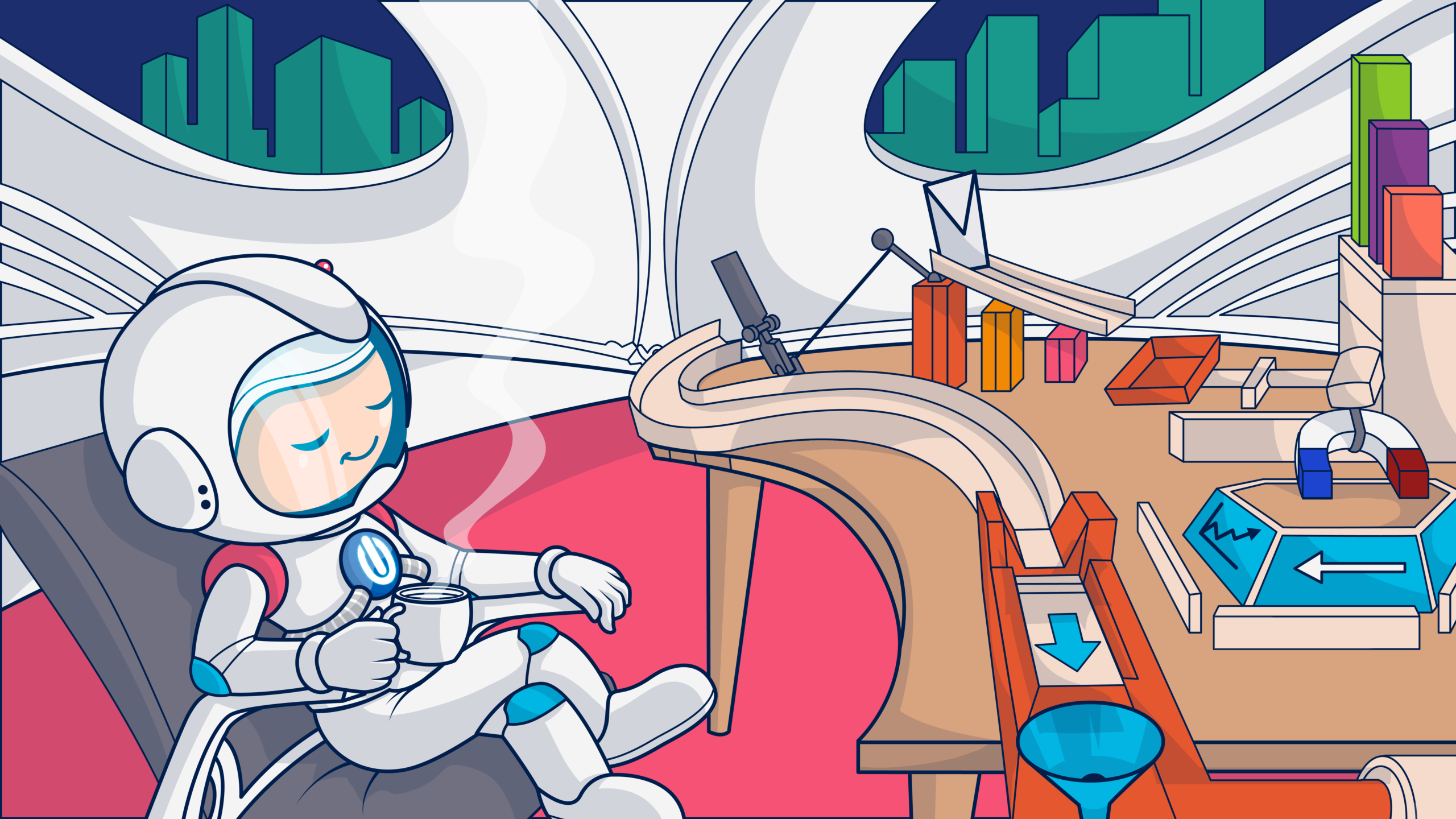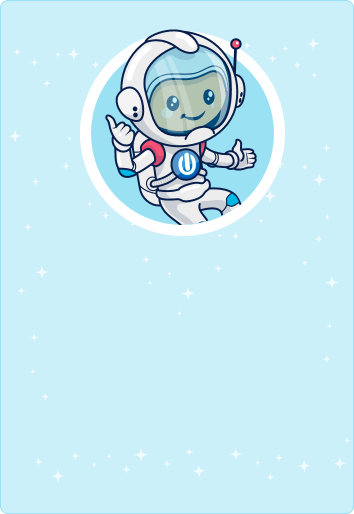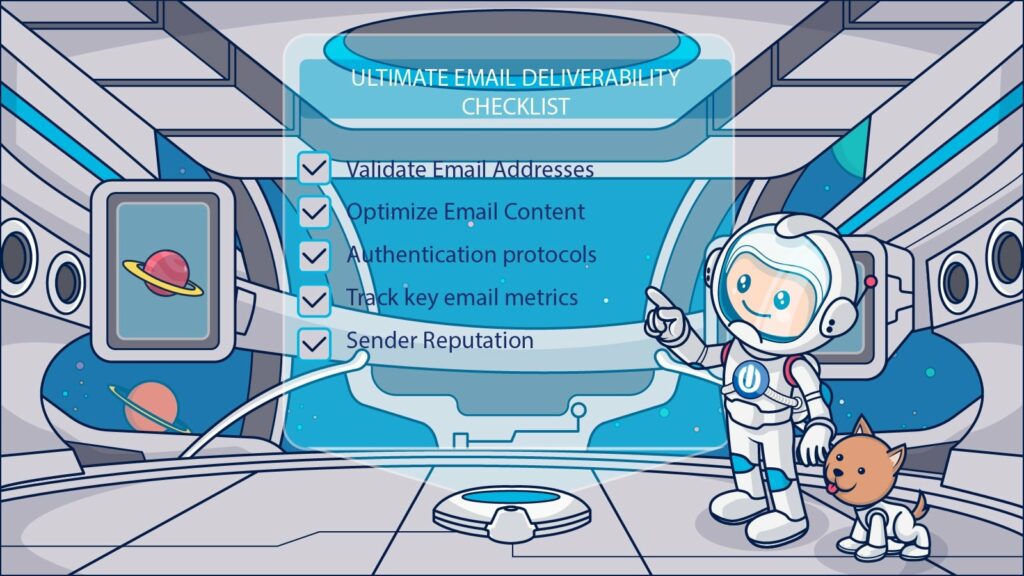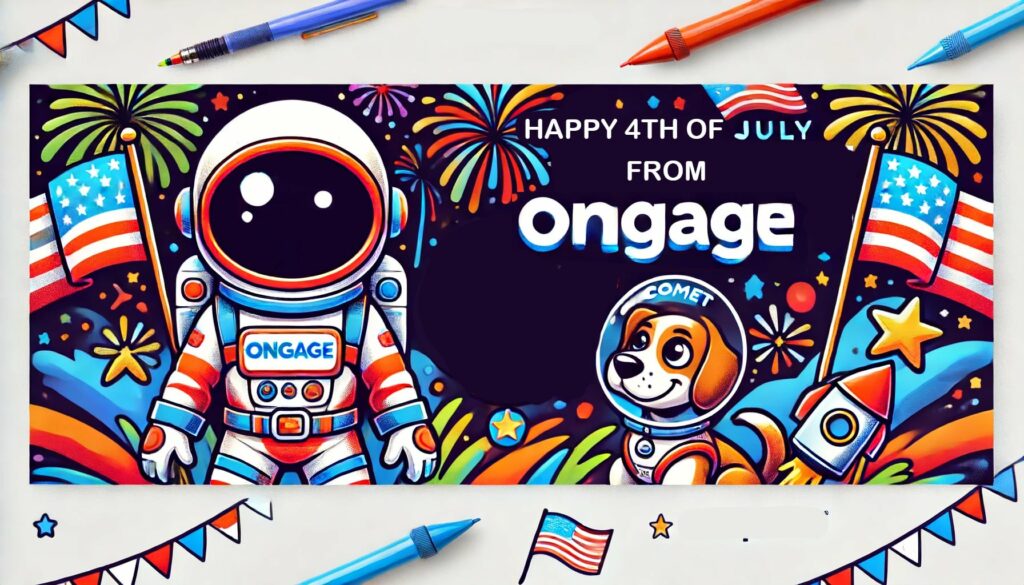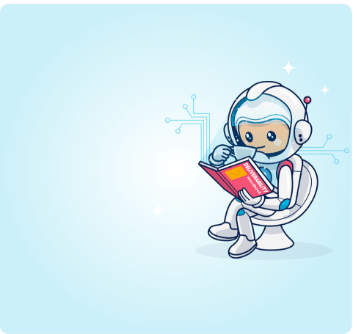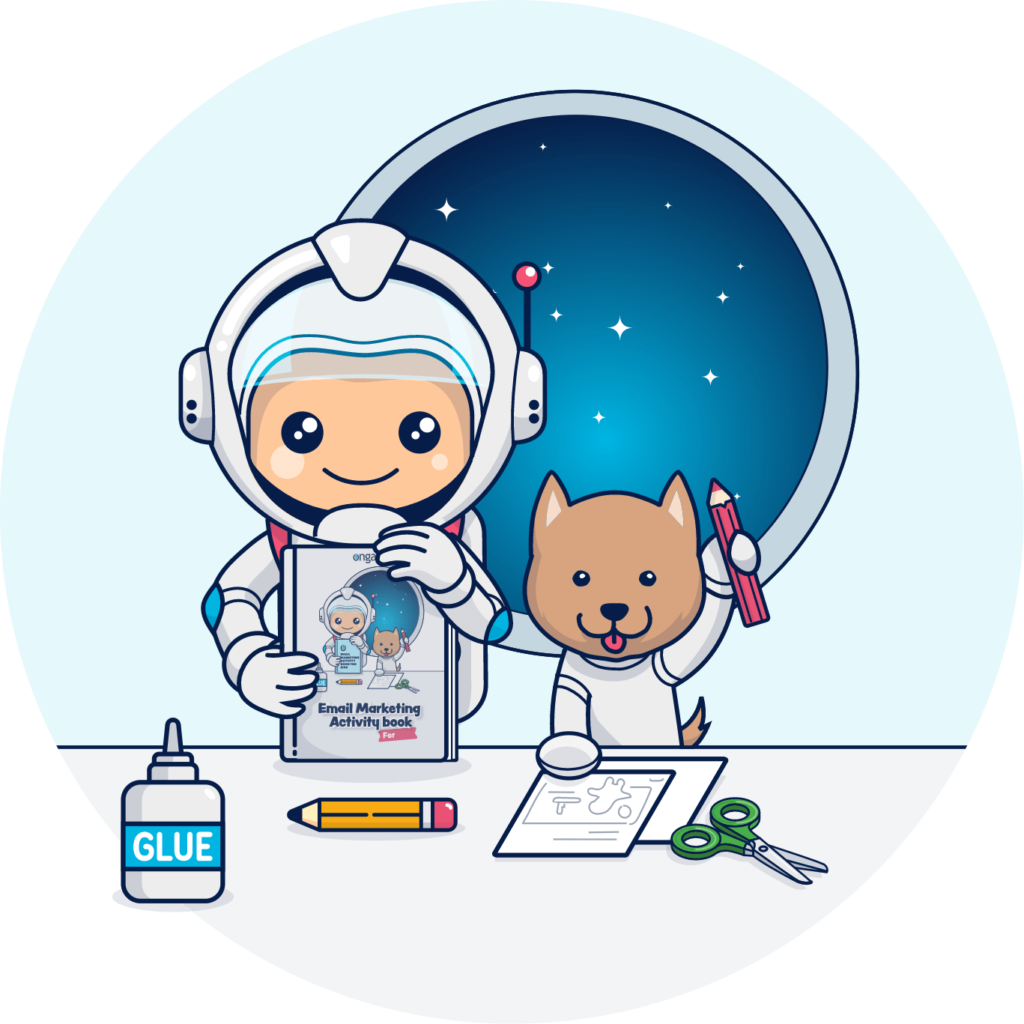Email drip campaigns use automation, personalization, and contextual content to deliver right-timed messages that nurture relationships and drive conversions. Discover how to use this prepared-in-advance but individually activated email series to deliver repeatable, scalable results for your brand.
Setting up a successful drip campaign requires the right email automation tools, careful planning, and a dash of creativity. A well-orchestrated email drip campaign that:
- Uses relevant messages.
- Carefully engineered to follow up with the right actions automatically.
- And that are sent on time.
Results in conversions and sales.
Preparing effective drip campaigns requires careful mapping of your customer’s journey, identification of key touchpoints, anticipating and accommodating path departures, branches, and loops, and continual testing and refinement.
Drip campaigns have been around for quite a while and there’s a lot that I can share with you to get drippy with it.
Let’s dive in.
What is an email drip campaign?
Drip email campaigns bring drip marketing strategies to email marketing. Drip marketing involves sending a series of messages to a target to nurture the relationship and achieve the sender’s objective, such as prompting a customer to complete a purchase or leave a review.
Drip campaigns execute this strategy by sending a predetermined sequence of messages to a prospect or customers.
Like other automated or triggered emails, email drip campaigns are activated by an event or behavior. Most often, these series of messages begin following the recipient’s action or inaction.
Examples of drip email campaigns include welcome emails, abandoned cart series, and re-engagement campaigns.
In each of these instances, a drip email campaign enables companies to communicate with relevant and timely content.
By preparing the content of these messages and the order of their delivery in advance, marketers can automate these interactions and ensure that the timing is always right.
Whether a new customer makes a purchase at 3 in the morning or 3 in the afternoon, they receive a confirmation and thank you message right away. Your brand delivers a positive customer experience every time.
Drip marketing and drip emails get their name from the idea that these messages are sent steadily, continually exposing the recipient to reminders of (and nudges from) your brand.
Drip campaigns may use channels other than email, including text or direct (snail) mail, and even combine multiple channels to build personalized campaigns.
If you think you’ve heard of drip campaigns by another name, you’re not imagining things. Drip campaigns are also called waterfalls or waterfall sequences, autoresponder or automated email campaigns, email flows or workflows, nurture series, and lifecycle emails or campaigns.
| Drip campaign characteristics |
Are drip campaigns and triggered emails the same?
Drip email campaigns differ slightly from automated or triggered emails because they consist of messages sent at a specific cadence or over a designated interval.
So, instead of a single welcome or confirmation email, recipients of a drip campaign will receive a set of messages designed to work together and arrive at predetermined intervals.
Also, marketers can design a single drip campaign tailored to different recipient responses using detailed automation instructions and branching messages.
For instance, a new list subscriber who clicks through the first message in a welcome drip campaign might receive a different second message or be shifted to a different message flow than a new subscriber who doesn’t open the first welcome or opens it but doesn’t click through.
Drip campaigns with multiple if/then branches pauses, or endpoints can be complicated. But setting up these high-performance automated email sequences doesn’t have to boggle the mind.
Combining your email templates, well-planned flows, and your email marketing platform’s automation technology, you can develop exquisite drips that hit the spot.
Why use drip email marketing?
Drip campaigns accomplish a job that needs to be done and fill gaps in your email marketing strategy. These automated emails go granular, adding value to your subscribers’ email experiences with timely, relevant messages.
Instead of sending the same message at the same time to everyone on your list, email drip campaigns allow you to prepare relevant messages in advance and send them only when the time is right.
Sure, you could try to deliver this type of personal attention to each customer or subscriber manually–if you have very few subscribers and a whole lot of people available to monitor their every move and respond.
Wait. No, you can’t. Don’t even think about it.
Go with the automatic drip.
Use drip campaigns to raise awareness, give an extra nudge to seal the deal, build momentum, and enhance your subscribers’ experience as part of a comprehensive lifecycle marketing strategy that keeps your subscribers connected and converting.
5 benefits of using drip campaigns for lifecycle marketing
🚀 Drip campaigns enable you to manage segments-of-one at scale
Drip campaigns enable email marketers to take lifecycle-stage customization deeper with fewer segments.
Creating customer lifecycle or journey stage list segments makes it possible to target a group of subscribers at similar points in their customer journeys with dedicated campaigns, like a “first purchase” offer.
You can then add dynamic content tailored for each segment to your full list of newsletters and other mass email sends.
However, to send highly focused messages, you must create many segments. At some point, the costs of this added complexity begin to outweigh the benefits.
Drip campaigns offer an alternative way to send stage-specific, templated messages at scale while achieving more precise timing.
🚀 Email drip campaigns start every conversation at the beginning
Email senders use newsletters to introduce their values, promote seasonal sales, and deliver other timely, relevant messages. But if a new subscriber joins their list midway through one of these campaigns, they’re not getting a complete experience.
Will a “last chance” email make the best first impression for a new list member?
Instead of making your new subscribers feel welcomed and valued, out-of-context messages will leave them feeling left out.
Customized welcome and onboarding series brings new contacts up to speed and shows that you care about them individually.
🚀 Drip campaigns nurture customer relationships with extended exposure
Drip campaigns can make a direct pitch to purchase a product or take some other action, but they can also use attraction marketing principles to build and strengthen relationships.
Sending a series that introduces people to your brand and its values can be more effective than a single message.
The information you share can be sent in ‘bite-sized’ segments and leverage spaced repetition to make your brand more memorable.
🚀Drip campaigns boost conversions by combining relevance with persistence
Conversion-focused, behavior-triggered emails dispatched at the moment of decision can convince your subscribers to go ahead and click that buy button.
But is one email enough to convince your subscriber to act?
Using drip campaigns for abandoned cart or checkout recovery gives you more opportunities to close the deal.
Further, a drip campaign can start small and customize the intensity of subsequent messages or send follow-up messages tailored to the recipient’s behavior.
Avoid sacrificing profits; you don’t need to. Try a simple abandoned cart reminder email before sending a discount offer to convince someone to complete their purchase.
Combine your email drips with other channels, such as web retargeting and text messaging, to gain even better performance.
🚀Drip campaigns are responsive from start to finish
We know that not every subscriber will respond in the same way or at the same pace to your marketing emails. A static series just keeps coming, no matter how the recipient behaves. However, your drip campaigns can be designed to alter course in response to each subscriber’s actions automatically.
For instance, the first email for a webinar invite series prompting subscribers to register might arrive weeks before the event.
Subscribers who respond to this first email by registering don’t need to be invited again. But you’ll still need to stay in touch to keep them engaged between their registration and the event date.
Subsequent messages in their webinar drip should build anticipation and include reminders of the coming event.
For subscribers who don’t register after your first invitation, your series will continue to pursue that objective with information and incentives to attend.
Responsive, automated, and scalable drip campaigns help email marketers drive results.
How to set up automated email drip campaigns

Setting up your drip campaign will require strategic planning and technical implementation.
The process goes something like this.
Step 1: Identify the objectives or goals for each drip campaign you plan to build
Marketers collect a lot of emails to add to their subscription lists, and people get a lot of emails. Before you decide to send a drip campaign, decide why you’re sending it.
Begin your planning process with a goal that supports your business’s objectives, such as converting leads into customers, increasing average order values, or gaining more referrals.
Then, choose the drip email strategy to help you achieve that goal.
For instance, a pre-purchase series can build trust by educating consumers about your products and values. A post-purchase series offering subscribers rewards for referrals can expand your reach.
Step 2: Define the KPIs for your email drip campaign
Once you have a goal and metric, use historical data, predictive modeling, and your expertise to define what success will look like.
How much do you expect this campaign to increase referrals?
By what percentage do you plan to increase average order values?
Set primary and secondary KPIs to help you pinpoint weaknesses or gaps in your strategy.
Ongage’s platform enables you to track how each email in your campaign contributes to its success by using conversion points, which are activated using pixel tags.
Step 3: Prioritize your drip campaigns to maximize your returns
Implement your drip campaign program by starting with the campaigns that will impact your bottom line most and fill gaps in your email marketing strategy.
What are the missing pieces keeping your machine from completing its task?
Look at your existing performance data to detect leaks in your pipeline and areas where increasing conversions could be a real game changer. These are prime places to bring a drip campaign into play.
Map key touchpoints along your customer’s journeys to help select and prioritize your campaign goals.
| Examples of journey stage objectives to target with drip campaigns 🏁 Awareness: A subscriber who signed up for an ebook or other lead magnet may not know much about your business’s product or services. A drip campaign to educate new subscribers about your brand’s products or services, its values and mission, or the value it brings to customers can support awareness-related goals. Drip campaigns at this stage should be focused on gauging subscriber response to help you identify and convert leads. Set and track engagement performance metrics, such as getting subscribers to sign up for a webinar or click through to view a product page to maximize the value of your drip campaigns. 🏁 Consideration: Getting subscribers to book a demo, visit a product page, add items to their cart or wish list, or download a case study will move them forward on their path to purchase. 🏁 Purchase: The significance of this stage in your sales funnel makes it prime territory for goal-setting and using drip campaigns to achieve those goals. Product recommendations, browse abandonment, and special offer drip campaigns can boost your conversion rates. 🏁 Adoption: A well-timed email offering help can reduce churn and increase customer lifetime value. Your company’s adoption-stage goals will depend on the type of product or service you provide. For consumables, a good sign of successful adoption is reordered. For a SaaS, you want to see signs that your customers actually use your service. A parked app is an app that is at risk for non-renewal. 🏁 Retention: They didn’t send it back, or they’re using it for now. That’s great. But will they repurchase or renew? Drip campaigns employing surveys or other methods to uncover your customer success rates or net promoter score, as well as repurchase and engagement rates, can tell you a lot about how many of your first-time buyers will become loyal customers. 🏁 Expansion: For revenue expansion campaigns, your goals are to increase average order values and order frequency. Resells, upsells, and cross-sells will be your conversion actions. 🏁 Advocacy: Can it get any better than loyal customers who keep making purchases from you and tell their friends to do the same? Advocacy-stage campaign goals include increasing referral rates, social media mentions, email forwards, and the volume of positive reviews and testimonials your customers contribute. |
Step 4: Create or choose the list segments to target with your drip campaign
When your campaign goals are linked to different stages in your funnel, your audience segments will be, too. This segmentation is the first stage of what will eventually be a hyper-segmented and timed campaign that will match each subscriber’s individual journey.
Funnel-stage segmentation isn’t your only option, though.
Use zero- and first-party data about your subscribers to create segments based on your contacts’ lifestyle or career attributes, stated preferences, or other characteristics to send them content that’s relevant and welcome.
Accompany your welcome discount with images of trending women’s fashions for one subscriber and the latest top picks for men in another.
Segment your B2B nurture campaigns based on the recipient’s role in the organization and send drip series that target their unique role-related pain points.
Your email campaigns will be more relevant and personalized when you incorporate what you know about your subscribers. These campaigns can also serve as a source of new information to add to your data set.
Step 5: Design and map your campaign’s flows in your email marketing platform
After deciding what type of drip campaign you want to send and who you’ll send it to, it’s time to create the drip automation.
Here’s how ⤵
➥ Define the triggers for the start of the drip campaign and any subsequent branching, pause, or end triggers.
The triggers that initiate an email flow may be behavioral or situational–based on the subscriber’s action or a particular attribute.
For example, a newsletter sign-up is a behavioral signal. As soon as this signal is received, the subscriber’s journey should begin with either a welcome message or a confirmation (double opt-in) request, followed by a welcome message.
A drip campaign be sent only to individuals within a segment that meet a behavioral and situational trigger combination. For instance, you might decide to only initiate a campaign for new subscribers in a specific geographic region or with a certain job title.
Since open rates are not a reliable indicator of engagement, look for other signals to control the initiation and continuation of your drip campaigns.
➥ Build your flow using Ongage’s events and triggers modules.
Ongage supports automated emails and email series through its Events and Triggers and Automation Rules modules. Events represent a series of one or more pre-programmed email messages that are sent automatically when the designated criteria are met. Automation Rules enable marketers to send transactional messages and message series.
Using these modules, you can designate the triggers that will begin and end a campaign or alter its course, the email templates for your campaign and the list or list segment that the campaign will target.
You can also create recurring campaigns, such as daily job alerts or other regular updates instructions to your campaign flows to initiate other flows or add or update data fields. For example, you can automatically start your sun-setting process for subscribers who don’t respond to a re-engagement campaign.
Step 6: Optimize and test your campaigns
After all that planning, it’s time to set your campaign in motion. When you create a single email template, make sure each part of that email supports every other part and leads to your ultimate conversion goal.
Employ AI-powered predictive analytics and simulation tools to develop and test variables such as the campaign’s messaging, number of messages, cadences, and segments.
Coordinate the subject lines, messaging, CTAs, and designs across the messages in each drip campaign set. Be careful not to duplicate subject lines within a series, as this may make your subscribers (and ESPs) think you are sending them repeats of the same message.
Use ordinal symbols or other visual cues in your subject lines to help subscribers navigate lengthy drip series.
Next, wow your email recipients by adding dynamic content to your expertly timed messages for the ultimate customized experience.
Wrap things up with a can’t-resist CTA that directs your subscribers to the next step along the path you want them to take.
| When is the best time to send a recovery or nurture message? Timing isn’t consistent for every brand or every subscriber. A few minutes or hours difference can make a real difference in your opens and conversions. When SaleCycle tested drip sequence send times using a fashion retailer’s second email in an abandoned cart sequence, they discovered that it performed 52% better when sent 22 hours after the abandonment event compared to the same message sent 24 hours after the event. Use frequency and cadence performance data along with advanced send-time optimization tools to reach your subscribers at the ideal moment. |
How many emails should your drip campaign include?
As you develop your flows, also decide how many messages they will include and the cadence at which you’ll send them. For some campaigns, the answer to how many messages to send may be, “as many as it takes.”
For example, a SaaS onboarding series needs to communicate sufficient information to move the new user through the aha! moment and ensure adoption. Achieving that goal may take one message or ten.
Don’t be afraid to test different delivery methods and strategies to determine the best frequency and cadence for your series and how much information is TMI for your audience.
What about an e-commerce recovery campaign?
I recently saw this question posted in a forum. The seller wanted to know if they should continue to add messages to their abandoned cart sequence. Their open-to-conversion rate was above 5% for their campaign. The obvious answer to the question might be, “Until you don’t get any conversions.”
Revenue is revenue, right?
However, consider the real potential costs as well as the gains. Pay attention to increases in your unsubscribe and spam complaint rates and decreases in your click-through rates when deciding at what point a campaign series has outlived its usefulness.
Also, look at the net revenue per email for those last sends. Are you sacrificing margin in exchange for sales?
Remember to consider all your subscriber communications on every channel when calculating how often they’re hearing from you. Add a total volume or frequency cap to your automation settings for each campaign to avoid inbox overload.
Now, here’s a look at some examples of email drip campaigns from B2B and B2C brands.
Drip campaign email examples for every stage of your buyer’s journeys

Drip email campaigns are always working behind the scenes, contacting each subscriber at the perfect moment and nudging them forward.
After a new lead has become a customer, different drip campaigns maintain and build your relationship with them, reducing churn and increasing referrals.
Think of it like hitting the start button on one of those Rube Goldberg contraptions. You set up the pieces, designate the trigger that will cause the first one to topple, and your email automation platform will handle the rest.
Automating these critical customer acquisition and success communications frees your team to focus on your traditional campaigns and make continual improvements to your drip strategies.
Here are some types of email campaigns you can send as drips to increase your brand’s revenue flow.
🔁 Welcome drip campaigns that make subscribers want to stay connected with your brand
To create an effective welcome email, you need to connect your message to the reason the subscriber signed up to hear from you.
If your subscriber has signed up to receive blog updates or similar content, send them a quick introduction with links to recent content to welcome them.
If someone signs up to your email list to get a discount or other incentive, your first welcome email should include that promised incentive.
📧 Kenneth Cole advances the brand’s conversion goals with a reminder to new subscribers that they have a 30% discount to collect.

Don’t focus all the emails in your series on sales conversions, though.
Pay attention to the signals your subscriber is sending and think about their stage in the funnel.
In addition to reminding them of their available coupon code or other benefits, send messages that tell new subscribers about your brand and its values, introduce them to your community and provide helpful resources to help them get to know you better.
📧 Contently introduces new subscribers to their newsletter with a timely welcome drip.

When someone signs up for Contently’s newsletter, they receive an automated message that addresses the timing issue head-on. The company’s welcome drip says,
“We can’t predict when you’ll subscribe…so as a sign of appreciation until the next email comes out, we wanted to provide some useful resources and entertaining reads that offer a glimpse of what you can expect.” Notice how this first message also encourages deliverability-boosting engagement with a collection of useful links?
This drip campaign tailored for new subscribers gets them off to a great start with the brand automatically.
📧 Misfit Market’s welcome series begins by sending subscribers a promised discount code, then follows with several messages that explain more about the brand, its values, and the products it offers.

If you aren’t using welcome emails, this is where your drip campaign program should start.
Welcome emails achieve some of the highest open and click-through rates of all automated emails (86% and 24.7%, respectively), and they have high conversion rates, too.
📧 Nimble’s introductory email supplements the message with links to several getting-started guides to help new users get a quick start using the media of their choice.

🔁 Use a drip marketing campaign to nurture new leads after they’ve signed up for a content or webinar offer
When a new subscriber signs up to receive a discount or other incentive, they signal an intent to purchase. The same can’t be said of every subscriber who signs up to obtain access to a knowledge resource such as an ebook or webinar.
Your content or other offer has interested them in your business and attracted their attention.
Now, you have to convince these subscribers that continuing their relationship with you has value.
📧 Paylocity maintains forward velocity with this email that delivers the goods, makes the pitch, and invites recipients to take the next step in this email sales funnel by requesting a demo.

📧 After signing up to receive a report from the video production company, Wyzowl, subscribers receive a personalized thank-you message and a link to the requested content.

📨 Thanks for downloading – Thanks or downloading.
Wyzowl’s first contact after download keeps the message simple and focused on delivering the desired content. The email also introduces the brand’s personality and tells subscribers what to expect going forward.
The copy reads in part,
“We’re really hoping that you find the data interesting and useful to include in your posts. Is there anything we can do to make this easier for you?... We’ll also make sure to be in touch whenever we release our next batch of brand-new data.” True to their promise, this email is followed two days later by a second message offering a much wider selection of resources.

📨 Even more video marketing data for you
The second email in this drip campaign offers a personalized greeting along with a reminder about why the brand is getting in touch with the subscriber.
“Hey {{First_Name}}, Thanks again for downloading one of our reports! We wanted to follow up with some other interesting data we’ve compiled around video marketing…”Sales aren’t the only way your email drip campaigns can deliver value for your brand. You can also use these campaigns to gather additional data about new subscribers, get feedback about your products or services or even recruit brand advocates.
Wyzowl’s objective for this email flow isn’t just to win new customers but to create buzz. The email nudges recipients to use the brand’s data in their blogs and other publications, with copy that says,
“Here are some of our most recent data sets. Again, they’re totally free for you to use in your content; all we ask is that you link to us as a source.”Effective distribution is the power behind the throne when it comes to content marketing.
🔁 Onboarding drip campaigns help new users get used to you
An email drip campaign can help you keep a new customer and convert them to a loyal customer by making them feel comfortable.
Whether they are a first-time purchaser of your product or a new subscriber to your service, an onboarding series that anticipates and answers their questions and reassures them about their decision is a great tool for reducing churn.
📧 Professional job search services provider Indeed encourages job seekers to continue their journey with the platform with this triggered email containing next-step instructions for uploading a resume.

📧 ORLY explains their brand values and origin story in an introduction email to new subscribers.

📨 Welcome to the ORLY Family – Jeff Pink started ORLY in 1975 and we’ve been family-owned ever since!
This email from ORLY introduces the brand and its products before getting real about the brand’s values, saying,
“Unlike many other brands, ORLY has been committed since day one to the welfare of our furry friends. We’ve NEVER tested on animals, ALWAYS been Cruelty-Free, and all our colors are vegan…”Coordinated color-blocking and attractive images (yes, there’s a puppy!) guide subscribers through this message, made extra friendly by a prominent “contact us” CTA button supplementing the “shop now” one.
📧 Signing up for SEO provider DVS’s B2B newsletter triggers an email from the company’s president telling the recipient a little about the company, providing contact information, and inviting them to book a call to learn more.

💡 Find more examples of awesome onboarding emails plus tips for building your onboarding drips in our complete guide to creating onboarding emails.
🔁 Send value-adding content in consumable chunks one drip at a time
Sometimes the email is the product. Email newsletters that curate content, include original articles and commentary or provide regular, bite-sized content that entertains, inspires, uplifts or informs all fall into this category.
Both B2B and B2C brands can benefit sharing useful information and curated content in drip campaigns that deepen their relationships with new subscribers.
📧 Jasper.ai’s new subscriber series includes plenty of links, which means plenty of opportunities for the SaaS business to gauge their email recipient’s engagement level.

Among B2C companies, the first new sign-up message often includes a discount code, which may prompt the recipient to click through and shop.
Because getting that first click and conversion is important, so you might not want to slow these eager shoppers’ roll with a long explanation of your brand.
Use follow-up messages to complete your introduction and give subscribers more reasons to love your brand.
📧 Rhone keeps the conversation going with onboarding messages that continue after it welcomes new subscribers.

📨 Why Rhone? 🤔 – Rhone is premium activewear engineered for me. Our mission is to inspire each other to dare and achieve.
Sending a drip campaign packed with relevant information, such as user guides or product recommendations, helps establish your brand in subscribers’ minds and inboxes.
🔁 Send a series of triggered emails to recapture the subscribers’ attention
For conversions, drip campaigns are a precision tool that reaches your subscribers at the perfect moment. All you have to do is add the perfect message.
Use browse or registration abandonment emails to bring subscribers back to your website to finish what they started with messages that remind them of their previous activity, provide social proof or other information to encourage them to continue, or a direct incentive that brings them back.
📧 CreativeLive invites a browser to preview the course they were considering, and a few alternatives in this browse abandonment triggered email.

Cart abandonment campaigns are also recovery-focused. But here, your subscribers’ buying intent signal is stronger.
Removing a small obstacle may be all it takes to get them to say yes. What’s stopping a particular customer from hitting the purchase and pay button differs, though.
The top cart abandonment reason among shoppers who aren’t “just browsing” are extra costs at checkout. An abandoned cart series that offers free shipping may be all it takes to win back these customers.
Don’t want to wait around forever?
Put a clock on it with a limited-time offer, then send drip reminders that countdown the time that remains.
📧DTC brand Mr. Tortilla uses several persuasive tactics, including a countdown timer, in this drip series nudging recipients to cash in on their sign up discount and make their first purchase.
After signing up, new subscribers receive a greeting and a 10% off code from Mr. Tortilla’s founder, Ronald Alcazar.
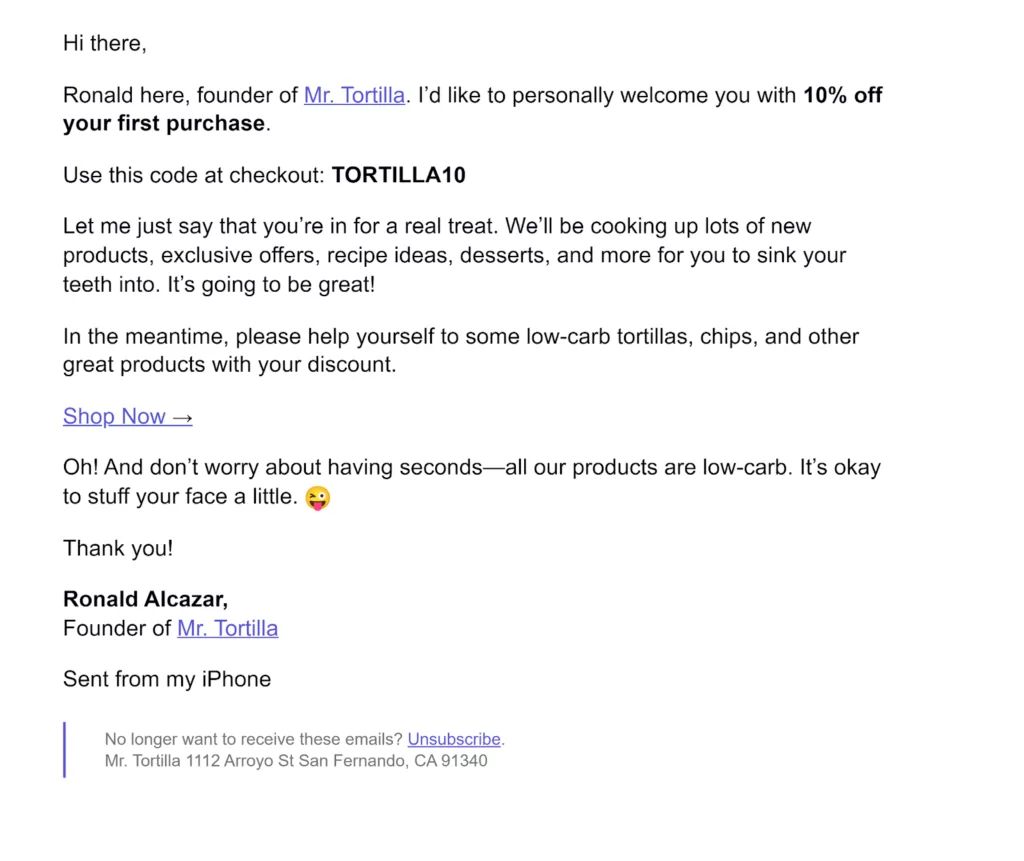
📨 Say hello to guilt-free tortillas 👋 – Hi there, Ronald here, founder of Mr. Tortilla.
The first message in this drip campaign example was mostly text with some HTML elements (a.k.a. HTML lite). The next message in the sequence goes full HTML, adding links, CTA buttons, images and emojis to alert new subscribers that their 10% discount is waiting.
The heading announces that “these savings won’t eat themselves” and is followed by a copy that says,
Don’t miss this deal! We noticed you haven’t touched your discount yet, friend. No worries, there’s still plenty of savings left on the table for you to dig into…”
📨 Didn’t see your gift? 😍- We sent you an irresistible 10% off.
Instead of making a personal appeal from the founder, this email includes customer testimonials and star ratings to convert recipients.
A day later, the third nurture message arrives. The subject line for this email says,
“Stop salivating. Start eating. 😋.”
Urgency has now entered the conversation in this third entry, with preview text warning that there are “5 hours left to get 10% off!” and a faux countdown timer at the top of the message. (The seconds countdown to 35 before resetting at 60.)

Two weeks later, Mr. Tortilla makes another effort to engage its new subscriber. This time with a subject line that says, “We want your business, Here’s 30% Off” and the inside copy includes a “just for you” discount code.

This message reverts to the low-HTML format, is signed by “The team at Mr. Tortilla” and includes an invitation to reply with any questions. I’m not sure, but this message may have been triggered by a browse abandonment action.
📧 Nuts.com doesn’t use a countdown timer in this cart recovery message, but does incorporate a dynamic block that shows the recipient what they have to lose.

Nuts sent this message to a first-time purchaser, so it also includes a special free shipping offer.
What if offering free shipping to every customer isn’t profitable?
Use separate drip campaigns based on the value of the abandoned order or the customer’s prior average order values. Combine segmentation with your trigger events to create these separate flows.
You can also employ non-price-sensitive persuasive tactics in your cart abandonment recovery series to move people toward conversion.
📧 Subscribers who pre-registered to receive updates about the GURU 2022 conference were entered into a flow that included several urgency-themed follow-up messages once registration opened.
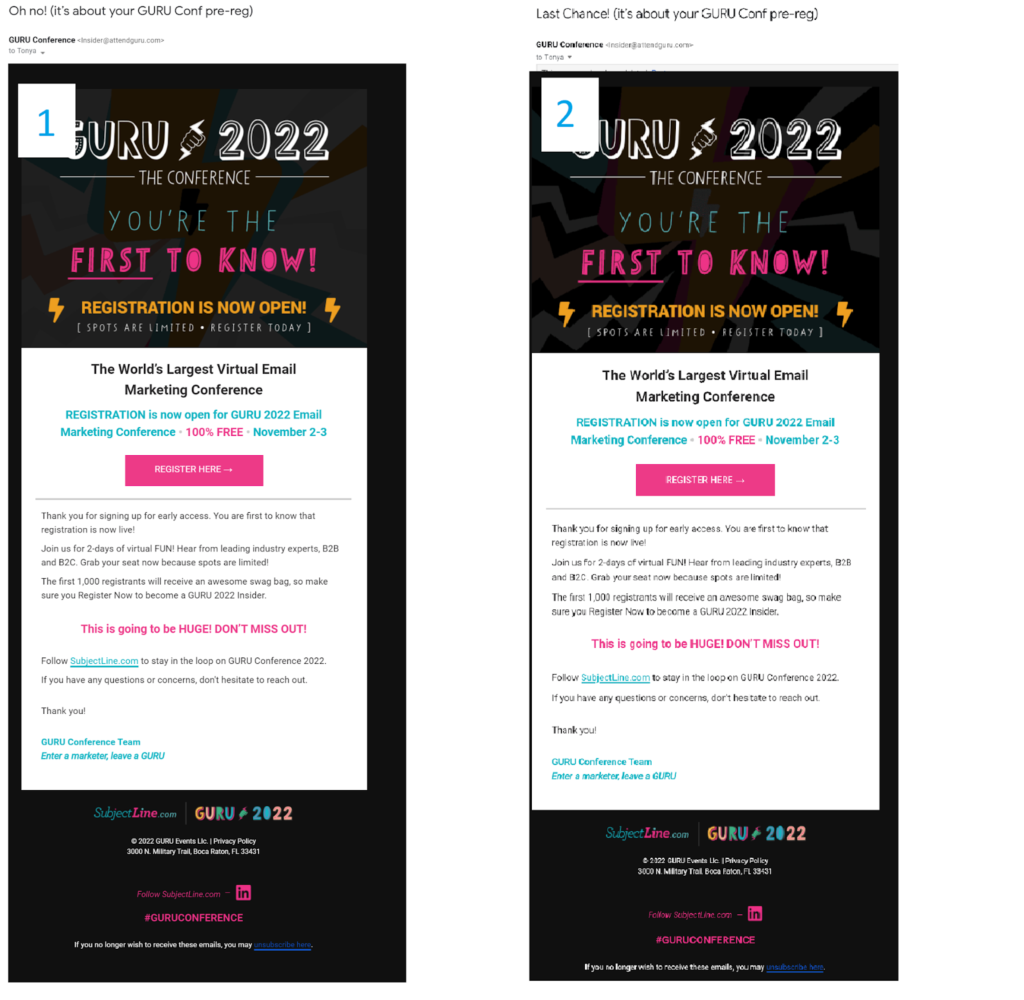
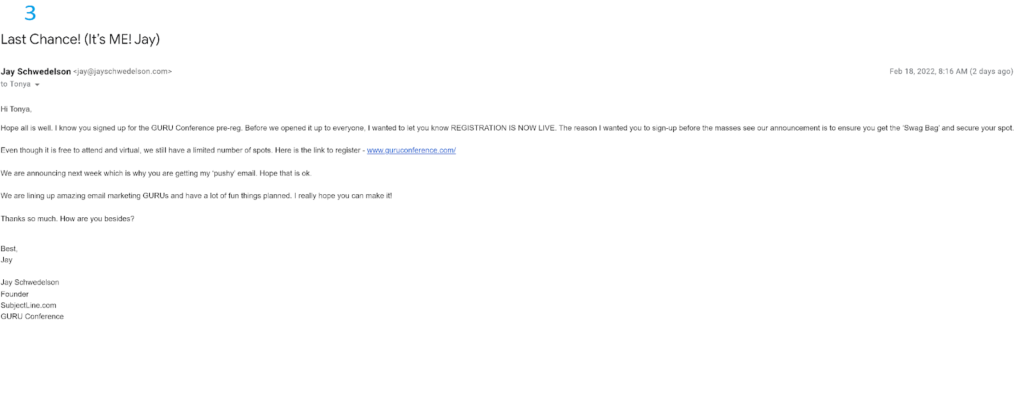
⚠️Don’t ruin the magic of your customized communications by ignoring your subscribers’ responses. Make sure you use the branching systems I describe in this article’s how-to section to prevent subscribers from continuing to receive conversion-focused messages after they’ve converted.
🔁 Send reminders and update drip campaigns that help your subscribers help themselves
Drip campaigns that help your subscribers achieve their goals can help you build relationships and increase sales.
Email messages that help your customers remember upcoming dates for service appointments, conferences, or webinars are a win-win strategy.
These campaigns ensure you aren’t left with empty bookings or missing attendees. Your subscribers benefit from timely reminders that keep them from missing out.
Follow-up with conference or webinar registrants after an event with supplemental content or links to recaps for those who may have missed the live program.
📧 B2B CMS provider Agility offers webinar skippers a second chance to view the content.

📨 {{First_Name}}, we recorded today’s webinar for you – We had a great session today on an ‘Introduction to Content Architecture’…
Agility employs several methods to personalize and humanize this triggered message, strengthening its value as a relationship-building tool.
The business uses an individual for the Sender name (Harmonie), and her image and signature appear in the email’s body. Besides a link to the recorded content, the message includes a brief summary of what viewers will learn–anticipating and answering recipients’ “what’s in it for me” questions.
Your travel company can win their subscribers’ affection by providing timely schedule reminders and destination-specific travel tips before the customer’s travel date. Then, win the next booking with a follow-up campaign that asks for feedback and recommends new places to go.
In the ecommerce industry, reminders help subscribers who don’t have time to finish their shopping in one session. Instead, they may use their carts to save items they want to revisit later. I do this on sites where setting up or finding the wishlist is a hassle.
Email my cart drip campaigns are a proactive way to serve your customers.
Instead of waiting for them to abandon their cart and sending a conversion-focused message, these messages are triggered at the subscriber’s request. Use a pop-up or message on your cart page to inform your subscribers of this service.
According to Barilliance, email my cart messages have a 24.6% conversion rate. In comparison, 18.5% of abandoned cart emails earn a conversion, and just 4.1% of browse abandonment messages end in a sale.
Continue to add value post-purchase, like David’s Tea does in this hybrid transactional and promotional post-purchase communication.
📧 The David’s Tea email pictured below is transactional but the message still delivers plenty of marketing tea.

💡 Like many brands, David’s Tea sends transactional messages like this one using a different From name than the one used for its purely marketing messages. Using separate senders, subdomains or IPs for your transactional and marketing campaigns can prevent critical messages from landing in subscribers’ spam folders.
Back-in-stock updates, reorder reminders, and other messages that provide useful information to you, subscribers are also prime candidates for development as drip campaigns.
🔁 Stay connected with your customers with post-conversion drip campaigns
Your first sale to a customer is a moment of great potential. They know you and like you enough to do business with you. Where the relationship goes from there is up to you. Maintain momentum and increase your customer lifetime values with value-adding post-purchase follow-up emails.
📧 Merkle encourages further engagement in this automated email response sent to people who registered to download an ebook with additional resource recommendations.
Some examples of after-conversion campaigns include product use guides that provide reasons for your customers to use their purchase (and need to purchase more) and answers common use questions.
Create customized drips based on previous purchases to send relevant product recommendations and new product introductions.
Employ segmentation plus your customer data to decide which subscribers should get the series about new cat toys and which will receive the discounts on dog food and when to send them.
Acknowledge subscribers’ birthdays, send them app use or milestone reports, and other date or activity-triggered updates that show them your interest.
Of course, reward and loyalty programs are a powerful tool in your relationship and retention toolkit as well.
Drip campaigns directed at your VIPs, updating them on their status, congratulating them on leveling up and offering them special perks will boost customer lifetime values and your brand’s reputation.
Continue to use your email drips to gather information and support retention efforts, too.
📧 Hootsuite uses a survey campaign to find out how users feel about its product. Engagement plus data collection for the win.

🔁 Send a series of enticements to win back your lapsed customers or subscribers
What if your customers make a purchase but then don’t come back?
Try a win-back email campaign to entice previous purchasers to buy again or ask them for their feedback to find out why they haven’t.
Use branching rules to send different feedback requests to customers who you win back and those you don’t.
📧 Doist, the brand behind the communication app Twist, uses a behavior-triggered campaign to find out what went wrong.

📨 Was it us, {{First_Name}}?
This email arrived after the subscriber failed to respond to Twist’s onboarding series and asks the non-user to provide feedback, saying,
“It seems like Twist wasn’t working for you, which isn’t what the team and I like to see. Do you have just a couple of minutes to complete a two-question survey about how we can do better?…” To encourage responses, Doist offers a chance for respondents to win a gift certificate.
You can also use drip campaigns to re-engage with subscribers who haven’t made a purchase from your brand or engaged with your newsletters or other messages.
These campaigns should focus on finding out if they want to remain active subscribers or would prefer to unsubscribe. Reengagement campaigns paired with automatic sunset policies help you maintain a healthy email list and protect your deliverability rates.
📧 Gravity blankets uses humor to attempt to reconnect with an unengaged subscriber.

📨 Knock, knock – Are you there?
Checking in on a lapsed subscriber with a light-hearted email featuring an image of the brand’s core product, Gravity Blankets asks, “are we in the right place?”
The message continues, saying,
We’ve been trying to send you the scoop on all things Gravity. But it looks like you haven’t been opening our emails. Is this the right email? Let us know!”A bright CTA button invites engagement with a copy that says, “yes, it’s me.”
🔁 Employ email drip campaigns to convert your customers into brand advocates
Drip campaigns are an excellent way to build brand advocacy by seeking referrals, requests for on-site reviews and testimonials, encouraging reviews on third-party review sites, inviting social media or forum engagement, and soliciting and sharing user-generated content.
You can begin the process with an attribute or action trigger and then continue the flow based on how your subscribers respond.
📧 Sam’s Club increases its chances of gaining customer reviews by automatically sending requests customized with dynamic content to subscribers when they make a purchase.

📧 Demand Curve’s referral drip begins with a (non-drip) newsletter invitation that includes a customized referral link. Once a subscriber meets the referral quota, their reward arrives via an automated email.

Timing matters when you are requesting feedback.
One of the best times to ask for a review is shortly after your customer has received and had a chance to try out your product. This means you need to wait until the estimated delivery date for physical products before you make your request.
Another good time to ask for feedback is after a subscriber has had a positive customer service experience.
Use drip campaigns to reach out to frequent customers to help build your online community and support your cross-channel marketing efforts by encouraging your biggest fans to engage with your company on multiple fronts.
Add an automatic cycle to customer relationship building with email drip campaigns
Email drip campaigns put your brand in front of your subscribers or customers at the perfect moment to propel them forward on their buyer’s journey, increase your email marketing team’s productivity, improve engagement and conversion rates, and enable you to scale your email marketing efforts efficiently.
And they’re easy to implement with Ongage!
🛸 Looking for more ways to increase revenue and growth? Check out our guide to reducing customer attrition for tips on keeping the customers you’ve earned.

